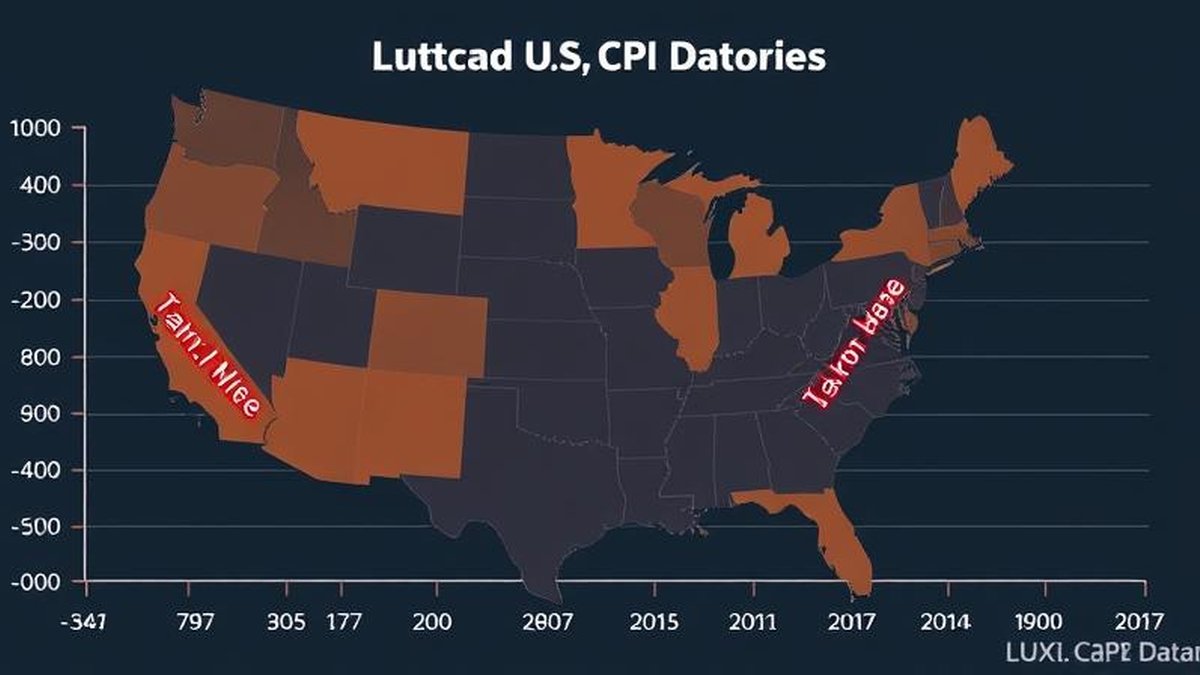U.S. Inflation Cools Modestly: What the Latest CPI Means for Markets, the Fed, and Households
Fresh Consumer Price Index (CPI) data showed a measured deceleration in U.S. inflation, with core readings easing and headline pressures tempered by softer goods prices. While housing and certain services remain sticky, the overall trend supports the view that inflation is gradually moving toward the Federal Reserve’s target range. Markets responded with a modest risk-on tone, and rate expectations shifted incrementally toward a cautious, data-dependent pivot later this year.
Inside the CPI Report
Headline vs. Core
Headline CPI slowed on a year-over-year basis, aided by benign goods pricing and a partial offset from energy. Core CPI (excluding food and energy) continued to cool, reflecting easing momentum in categories that surged during reopening and supply-chain normalization.
Goods vs. Services
Goods inflation remains subdued amid improved supply conditions, discounting in select retail categories, and normalized freight costs. Services inflation is still elevated but decelerating at the margin, with disinflation in travel-adjacent categories offset by persistent price growth in healthcare and personal services.
Shelter Dynamics
Shelter (rent and owners’ equivalent rent) remains the largest contributor to core, but leading indicators from new leases continue to imply a lagged downshift in official shelter readings over the coming quarters as renewals catch up.
Energy & Food
Energy’s contribution was mixed, with gasoline volatility contained by offsetting moves in utilities. Food-at-home price pressures eased further, while food-away-from-home remains above pre-pandemic trends but is stabilizing.
Market Reaction at a Glance
Rates
Treasury yields drifted lower along the curve, led by the 2–5 year tenors that are most sensitive to near-term policy shifts. Breakeven inflation measures were broadly steady, signaling confidence in the disinflation path.
Equities
Stocks posted modest gains, with rate-sensitive sectors and quality growth outperforming. Defensive groups held their ground as earnings visibility improves alongside easing input costs.
FX & Credit
The U.S. dollar was little changed against majors, while investment-grade and high-yield spreads tightened marginally as macro uncertainty eased.
The Fed’s Reaction Function
Data Dependence, Not a Victory Lap
Officials are likely to maintain a cautious tone, emphasizing the need for consistent evidence that inflation is returning to target. Today’s progress supports optionality for a gradual pivot, but the bar for a rapid policy reversal remains high.
Labor and Services Watch
Policymakers will focus on labor-market cooling (job openings, wage growth) and core services ex-housing—a sticky segment that best reflects domestic demand pressure.
Balance Sheet & Financial Conditions
Quantitative tightening continues in the background. The Fed will monitor financial conditions to avoid an unintended re-acceleration in demand if markets ease too quickly.
Scenarios for the Next 6–9 Months
Bull Case: Glidepath to Target
Core services cool further, shelter decelerates as lease lags flow through, and goods remain tame. The Fed signals a measured easing path; yields grind lower; risk assets extend gains with volatility contained.
Base Case: Slow Grind, Stop-Start
Disinflation persists but is uneven. The Fed keeps a meeting-by-meeting approach, delivering limited cuts later this year as confidence builds. Markets range-trade around data prints.
Bear Case: Sticky Services or Energy Shock
A rebound in services or an energy spike stalls progress. The Fed delays easing; yields back up; risk assets reprice to tighter financial conditions.
What to Watch Next
- PCE inflation (core and supercore) for confirmation of CPI trends.
- Employment Cost Index and average hourly earnings for wage-push signals.
- JOLTS and initial claims for labor slack and hiring momentum.
- Shelter leading indicators: new lease indices and vacancy rates.
- ISM/PMI price components to gauge pipeline cost pressures.
Implications
For Households
Incrementally lower price growth offers relief, though affordability strains persist in housing, healthcare, and education. Stabilizing energy and grocery costs help real purchasing power.
For Businesses
Input-cost volatility is easing, aiding margin planning. Wage growth is normalizing, but labor markets remain competitive for skilled roles; productivity investments stay in focus.
For Investors
A slower but steadier disinflation backdrop supports duration at the front-to-belly of the curve, favors quality balance sheets in equities, and improves visibility for cyclical earnings as rates bias lower over time.
Risks & Counterpoints
- Services stickiness could cap the speed of disinflation, keeping real rates restrictive.
- Energy/geopolitics may reintroduce headline volatility.
- Shelter measurement lags can delay the visible improvement in official data.
- Demand re-acceleration from easier financial conditions could complicate the path to 2%.
Investor Playbooks
Fixed Income
Lean into belly duration with selective credit risk; favor high-quality IG where carry compensates for modest spread risk. Stay nimble around major data prints.
Equities
Favor quality compounders and rate-sensitive growth with durable cash flows. Cyclicals tied to easing financial conditions can work tactically if disinflation is confirmed.
Alternatives
Real assets with contractual cash flows and inflation pass-through can diversify, while macro strategies may benefit from rate-vol normalization.
Frequently Asked Questions
Does this report guarantee rate cuts? No. It supports the case for gradual easing, but the Fed needs repeated confirmation across inflation and labor data.
Why are services still elevated? Services prices track wages and demand; they adjust more slowly than goods. As labor markets cool, services inflation typically follows with a lag.
When will shelter cool in official data? New lease disinflation filters into CPI with a lag; effects usually become more visible over multiple quarters.
Bottom Line
The latest CPI print strengthens the narrative of gradual disinflation and keeps a measured Fed pivot on the table. Markets can live with slower growth if inflation keeps easing—so long as policy remains predictable and the labor market normalizes without a hard landing.
